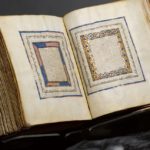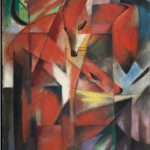
New York City.- The Museum of the City of New York is proud to present “Cecil Beaton: the New York Years”, on view until February 20th 2012. The exhibition traces the artist’s astonishing career in New York City. Photographs of Greta Garbo, Audrey Hepburn, Mick Jagger, Marilyn Monroe, Wallis Simpson (the Duchess of Windsor), and Andy Warhol, among many other 20th-century icons, taken by a man who made himself iconic—the legendary Cecil Beaton .”Cecil Beaton: the New York Years” will feature vintage fashion photographs and celebrity portraits, award-winning set and costume designs for celebrated stage productions, original drawings, and other ephemera. A book, entitled Cecil Beaton: the New York Years, accompanies the exhibition; featuring 200 stunning images, it is published by Skira Rizzoli and will be available in the Museum’s Shop and elsewhere.
Susan Henshaw Jones, the Ronay Menschel Director of the Museum, commented: “New York City provided especially fertile territory for Cecil Beaton in the mid-20th century. Presented with its kaleidoscopic scene, he photographed everything from the jewel-toned gowns of Charles James to the scrappy t-shirts of Warhol’s Factory members, and everyone from Greta Garbo to Tom Wolfe, and even himself in many guises. Cecil Beaton was enchanted by New York, and in turn he enchanted the world with its glamour.” The exhibition documents the artist’s colossal success in New York City from the height of the Jazz Age through the 1980s. As a result of his prescience, which brought him to the city as it was becoming a world capital, and his talent, which catapulted him to the heights of his profession almost instantly, Cecil Beaton enthralled New Yorkers and the rest of the world with his prodigious output, blurring the boundaries between art, theater, commerce, high society, and counter-culture. “Cecil Beaton: the New York Years” is the second exhibition of the artist’s work at the Museum, which in 1969 mounted 600 Faces by Beaton.
 Highlights of the exhibition include photographs that stunningly document the pantheon of celebrated fashion designers of the day, including Balenciaga, Irene, Charles James, Lanvin, Mainbocher, Elsa Schiaparelli, and others, drawings and photographs of the women who played key roles in Beaton’s career and life—Mona Bismarck, Greta Garbo, Diana Vreeland, and Wallis Simpson (the Duchess of Windsor), material related to Beaton’s firing by Condé Nast in early 1938 for an anti-Semitic comment that was inadvertently published, although Beaton was brought back to the magazine in the early 1940s, Beaton’s photographs of Greta Garbo, counted among the greatest images of her ever taken, which were made when the two were romantically involved, photographs of such 20th-century figures as Adele and Fred Astaire, Marlon Brando, Maria Callas, Martha Graham, Elsa Maxwell, Babe Paley, Diana Vreeland, and more. The exhibition will also feature Beaton’s hand-drawn portraits, caricatures, and sketches beside costume and set designs for Broadway plays, including Noël Coward’s Quadrille (1954), Lerner and Loewe’s My Fair Lady (1956), and Lerner and Previn’s Coco (1969) and the New York City Ballet productions of Camille (1946), Illuminations (1950), and Swan Lake (1951).
Highlights of the exhibition include photographs that stunningly document the pantheon of celebrated fashion designers of the day, including Balenciaga, Irene, Charles James, Lanvin, Mainbocher, Elsa Schiaparelli, and others, drawings and photographs of the women who played key roles in Beaton’s career and life—Mona Bismarck, Greta Garbo, Diana Vreeland, and Wallis Simpson (the Duchess of Windsor), material related to Beaton’s firing by Condé Nast in early 1938 for an anti-Semitic comment that was inadvertently published, although Beaton was brought back to the magazine in the early 1940s, Beaton’s photographs of Greta Garbo, counted among the greatest images of her ever taken, which were made when the two were romantically involved, photographs of such 20th-century figures as Adele and Fred Astaire, Marlon Brando, Maria Callas, Martha Graham, Elsa Maxwell, Babe Paley, Diana Vreeland, and more. The exhibition will also feature Beaton’s hand-drawn portraits, caricatures, and sketches beside costume and set designs for Broadway plays, including Noël Coward’s Quadrille (1954), Lerner and Loewe’s My Fair Lady (1956), and Lerner and Previn’s Coco (1969) and the New York City Ballet productions of Camille (1946), Illuminations (1950), and Swan Lake (1951).
British-born Cecil (Walter Hardy) Beaton (1904-1980) arrived in New York City in 1928, having achieved early success in his homeland. Trans-Atlantic connections resulted in his near-instant introduction to New York City’s elite, including Elsie de Wolfe and Edna Woolman Chase, the editor of Vogue magazine at the time. What followed is the stuff of legend: a remarkably agile career which spanned fifty years and as many visionary works in which Beaton brought his rarefied vision to bear on fashion photography, illustration and caricature, portraiture (in drawings and photographs), and set and costume design for stage and film. Cecil Beaton’s stratospheric ambition was nurtured and sustained by mid-20th–century New York, where his career was able to maintain a feverishly high pitch. Society figures, media giants, impresarios, celebrities, actors, artists, writers, and the merely famous passed in front of his camera in an endless parade of glamour and style. The pages of Condé Nast publications—most notably, Vogue magazine—showcased his elaborately staged photo shoots, in which his eye for opulence and drama animated such sitters as Fred (and his wife, Adele) Astaire, Maria Callas, Greta Garbo, Martha Graham, Audrey Hepburn, Katharine Hepburn, and the woman who would become the ultimate 20th-century icon: Marilyn Monroe. He enlivened his photographs with sets in which he borrowed liberally and extravagantly from European art forms, incorporating formal elements of modern (and classical) painting and sculpture into his work, and bringing elements of such major aesthetic movements as impressionism, surrealism, and others into the homes of magazine readers nationwide.

Beaton’s photographs, in essence, were sets—or tableaux—enabling him to shift effortlessly into design for the performing arts just as post-WWII New York was becoming an international cultural capital. His extraordinary stage sets and costumes for Broadway, the Metropolitan Opera, and the New York City Ballet were masterful evocations of “place” in the extreme. He depicted the ancient Chinese society of Turandot (1961) with a visual hierarchy of robed chorus members and tiered pagodas; original costumes for this opera will be on view in Cecil Beaton: The New York Years. The Metropolitan Opera’s opening season at Lincoln Center featured Beaton’s production of La Traviata; original costumes from this opera will also be on view. His costume designs for the Ascot Race scene in Broadway’s My Fair Lady (1956), for which he won a Tony Award, pointedly exaggerated Edwardian fashion and later inspired Truman Capote’s renowned Black and White Ball of 1966. The facility with which he designed for the stage coupled with his mastery of photographic technique catapulted him into film, where his costume and set designs for My Fair Lady (1964) earned him two Academy Awards, both in addition to the one he’d received for his costumes in the beloved film Gigi (1958).
In the 1960s Beaton turned his lens on Andy Warhol and the Factory. Like Beaton and his close friend and confidante (and subject of numerous photographs), Truman Capote, Warhol moved easily both within New York society (where each found artistic inspiration) and outside of it (where each was able to work obsessively). Unlike Beaton, Warhol had publicly expressed his belief that art and commerce were inextricably linked. Unlike Warhol however, Beaton was criticized—by Hilton Kramer in The New York Times—for his proximity to society’s riches. Possibly inspired by, or recognizing a kindred spirit in Warhol, Beaton pursued a new, young generation of the rich or famous, including a study of Factory members Candy Darling and Ultra Violet, as well as others, such as Mick Jagger and Tom Wolfe.

The Museum of the City of New York celebrates and interprets the city, educating the public about its distinctive character, especially its heritage of diversity, opportunity, and perpetual transformation. Founded in 1923 as a private, nonprofit corporation, the Museum connects the past, present, and future of New York City. It serves the people of New York and visitors from around the world through exhibitions, school and public programs, publications, and collections. The museum’s collections include paintings, drawings, prints, and photographs featuring New York City and its residents, as well as costumes, decorative objects and furniture, toys, rare books and manuscripts, marine and military collections, police and fire collections, and a theater collection (documenting the golden age of Broadway theater). Among the rare items in the museum’s collection is a chair that once belonged to Sarah Rapelje, daughter of Joris Jansen Rapelje of Nieuw Amsterdam, and said to be the first child born in New York State of European parentage. The chair was donated by her Brinckerhoff descendants. The museum is known for its comprehensive collection of photographs, which includes works by Jacob Riis and Berenice Abbott, as well as many Depression-era Federal Art Project photographs. The museum is also home to several recreated furnished rooms from the house of John D. Rockefeller, donated by his son John D. Rockefeller, Jr. Visit the museum’s website at … http://www.mcny.org







